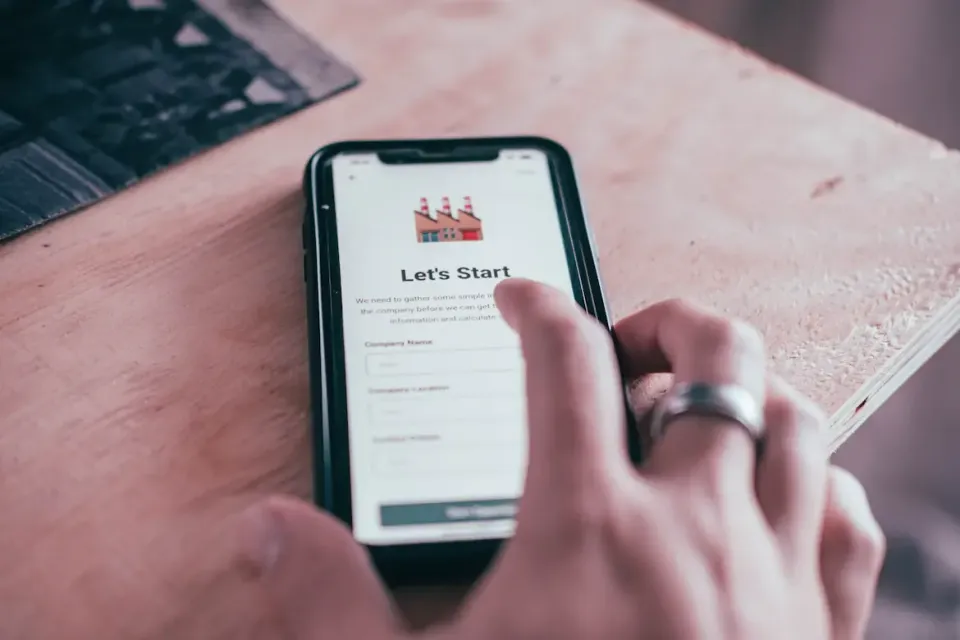Onboarding New Hires Into a Remote Team With Async Processes

Working in a remote team has its challenges, especially when it comes to onboarding new hires.
Key Takeaways:
- Make sure to keep an internal checklist for the onboarding team to use.
- Likewise, also keep a welcome checklist for the new hire in place.
- Educate your new hires on the remote work lifestyle with a remote work culture workshop.
- Train your existing remote teams and new hires the remote work etiquette and best practices.
If the new hire doesn’t get the support they need from their new colleagues, or if they feel disconnected from their new team from the get-go, it can result in them leaving their job sooner than they might have otherwise.
Or worse: They might be so uncomfortable with their new remote work situation that they refuse to join the team entirely.
How to Onboard New Hires Into a Remote Team With Async Processes
With a strong onboarding process, not only do you help your employee hit the ground running — but you also set them up for success going forward.
This ultimate guide to onboarding new hires into a remote team with asynchrony will help you build an effective and engaging onboarding experience for all future employees.
What Are Async Processes?

Async processes are the systems, conventions, and tools to have in place to support asynchronous communication—the preferred method of communication when working in a remote team.
When it comes to onboarding new hires, async processes are essential in providing structure, consistency, and clarity. This will help onboarding be as seamless as possible across the entire team.
Remote teams often use a combination of tools and resources to stay in sync. This includes communication, project management, collaboration, and scheduling apps.
These tools and resources help break down barriers and create a sense of closeness and togetherness.
What Does Onboarding Look Like in a Remote Team?

Onboarding in a remote team is the same as onboarding in a traditional office environment.
Managers should make sure to cover all the bases and get new hires set up with everything they need to be successful and productive from day 1.
This includes getting them set up with the right tools and resources, having them meet with key stakeholders, and getting a quick overview of processes, culture, and more.
The difference when onboarding in a remote team is that companies need to have everything structured to be able to communicate everything clearly and effectively through asynchronous communication.
This includes setting up a check-in meeting with the new hire so that managers can guide them through getting set up with the resources they need and introducing them to the team.
Make sure to record the meeting so you can send it to them afterward so the new hire has a record of what was discussed.
Why Is Onboarding So Important in Remote Teams?

Remote teams are often more collaborative than traditional office environments. This means remote teams have more responsibility to help each other out, learn from each other, and be self-sufficient.
This is why onboarding is so important. New hires are going to have a lot of questions, especially if they’re new to working remotely.
They might not know where to go for certain resources or how to use certain tools. They might not have a firm grasp on how to work in a distributed team either.
This can create an unnecessary burden on remote team members who are already experts in their field.
Onboarding new hires will help managers be proactive about onboarding them. This means managers or team members are not going to be stuck answering basic questions that could have been answered before the new hire even started working with the team.
The Critical Checklists for Day 1

Effective onboarding is all about making sure new hires are set up with the right tools and resources from day 1 so they can hit the ground running.
So how we can train them on best practices so they don’t have to be trained on everything again later down the line is what matters the most.
Asynchronous collaboration is an important tool for remote teams. It allows companies to work more efficiently and take advantage of remote team members’ different schedules. This is perfect for onboarding new hires.
An Internal Checklist for the Onboarding Team

To start with, always keep an internal checklist that the onboarding team can tick off as things progress down the line.
The internal checklist should include 3 main milestones.
1. Setting up Access to Company Resources
With asynchrony in place, the onboarding team can easily send the new hires documents, files, and snippets they need to get started immediately instead of waiting on email responses or video calls.
By keeping all these resources together in one folder and assigning it to the employee as part of their onboarding process, companies can ensure that everything they need stays organized and accessible.
Providing immediate access to company resources like emails, project management software, etc. results in a smooth transition of new hires into your organization that reduces training time and increases retention rates.
2. Scheduling Greeting Meetings With the Current Team
Remote teams are great, but they can sometimes come with a different culture than what people are used to.
A greeting meeting with the current team is a great way to get the new hire acquainted with the team, the company’s culture, and processes.
Let them be on their own to interact with each other. Educate the current team to introduce themselves and to help the new hire understand more about the natural workflow of the company.
3. Educating About the New Hire’s Role and Work
An important part of onboarding new hires is to help them understand the team’s roles and responsibilities.
This will help new hires get a quick overview of what they’ll be doing and where they fit in. This is especially important if the company hired remotely.
That’s because companies will never want the new hire to have any misunderstandings about their role and feel like they don’t have a place on the team.
This can happen if the onboarding team doesn’t take the time to explain the roles and responsibilities of the new team member.
A Welcome Checklist for the New Hire

In addition to the internal checklist, managers should also have a welcome checklist prepared for the onboarding team to use when welcoming a new remote team member.
A few of the important milestones to be included here are:
1. The Current Priorities, Tasks, and Deliverables for the New Hire
This is where the onboarding team should explain to the new hire the current priorities at work, their tasks, and deliverables.
This includes what they should be doing with top priority, what they should do every day, and any other projects or tasks that they should contribute to.
It's better not to dump all their work tasks on them the very first day. Introduce them to their tasks over the course of a few days so they don't feel overwhelmed with all the work they should be doing in their new job.
2. Asking For Feedback From the Current Team
Another great way to get the new hire acquainted with the company’s culture, processes, and feedback from key stakeholders is to have a simple feedback session.
Managers could have one feedback session and invite everyone on the team or break up feedback into segments based on the areas the new hire is working in.
Basically, this is where the onboarding team should focus on getting feedback from the current remote team members on what they think the new hire is doing well and where they could use improvement.
3. Staying Close to the New Hires to Help Them Get Acquainted With the New Company
It's crucial that managers assign someone to always stay close to the new hire to help them out whenever they need help.
Since this is a remote team, you can assign more than one team member to help the new hire, depending on whoever is active and available at the time they need help.
Such a helping hand will grant the peace of mind the new hire most probably seeks in a new job. With this, the organization also becomes a friendly space for them.
Remote First Culture Workshop

A Remote First workshop is a great way to introduce the new hire to the remote work lifestyle.
This will be different from onboarding because the onboarding team will be taking a more structured approach to introducing the new hires to the aspects of the remote work lifestyle.
The core purpose of the workshop should be to educate the new hire on remote work, what it means for them, and how the working processes change as they shift from office to remote.
To achieve this, start by:
- Making sure the company has a plan in place for the Remote First workshop. Make sure to have a curriculum in place so the new hire leaves the workshop with new skills and insights.
- Make sure the company has the right facilitator and venue selected.
- Next, invite the new hire to participate in the Remote First event.
- Make sure to let them know about the benefits of participating in the workshop and when the workshop is taking place. Be transparent about the workshop so the new hire knows what to expect.
Starting With an Easy Task

When a company has a new hire, don’t bombard them with their long-term responsibilities. We discussed sharing with them their priorities, tasks, and deliverables during the onboarding session.
But as we mentioned, it's not advised to bombard them with complex, boring parts of the job right from the get-go.
Instead, give them a few weeks to work on easy deliverables. This helps in building confidence for the new hire while also getting used to the company culture.
Start by assigning them small, easy tasks. If done right, this can also serve as a 'training' period where you can teach and correct them for any mistakes made.
Such guidance and ease of mind help the hire to be prepared when more demanding challenges come at them.
The Onboarding Buddy Is Key

Always make sure new hires have an onboarding buddy to help them get through struggles at their new company. This is similar to having someone stay close to the new hire but with a little wider scope.
Preferably, the onboarding buddy should stay with the new hire in three different phases of the onboarding process:
1. A Two-Week Check
A two-week check is something for the onboarding team to see how the new hire is settling in and ask for feedback about the processes so far.
This will also help the team to get any feedback from the new hire on what they’ve seen and experienced so far in the onboarding process.
Start the check-in and feedback session by welcoming the new hire to the company and thanking them for taking the time out of their day for the meeting.
Next, ask the new team member what they’re looking forward to the most and any concerns they might have going into the job.
The onboarding team should make sure they're transparent about company culture so the new hire is well aware from the get-go.
2. Weekly Check-ins
The next phase is a weekly check-in to see how the new hire is doing and make sure they’re getting the answers they need.
Again, this might feel a bit like asking for feedback but the core purpose here is to keep everyone reminded of the new team member. Educate them on how they can make the new hire a fully-fledged team member.
This is also the time to encourage the new hire to ask questions and promote social bonding.
3. Check-in for Deliverables and Contributions
Finally, the onboarding buddy will need a check-in further down the line that focuses on the new hire’s deliverables and contributions.
Once the new hire is assigned their tasks, this is where the onboarding buddy should assess how they're performing so far.
The core purpose here is to identify how well the new hire is performing, whether they're underperforming or overperforming, and ask for any sort of measure they need to improve themselves at work.
Train the Team on Remote Work Etiquette and Best Practices

Managers should make sure to coach the existing team members on best practices so they can help coach the new hires.
This will help the new team members to get acquainted with the team and learn the ins and outs of working in a distributed team.
It’ll also help the existing team members stay up to date on best practices.
Conclusion
Onboarding new hires into a remote team doesn't have to be an uphill battle.
Especially with asynchronous processes and tools, onboarding only gets easier in remote teams when done right.
It's vital to note that the onboarding team plays an important role in the onboarding process. Managers should prepare checklists for them so that they know when and how to effectively help the new hire achieve their milestones.
With the mentioned strategy adapted into an organization, remote employee onboarding will be a lot easier, more effective, and more efficient!
Follow us for more knowledge about remote work
We'll be publishing new articles every week, and new social media content every day. If you enjoyed this article, follow us on Twitter or Linkedin, and stay in the loop. Share our content and drop us a comment there. Let's help more people learn about remote work.


